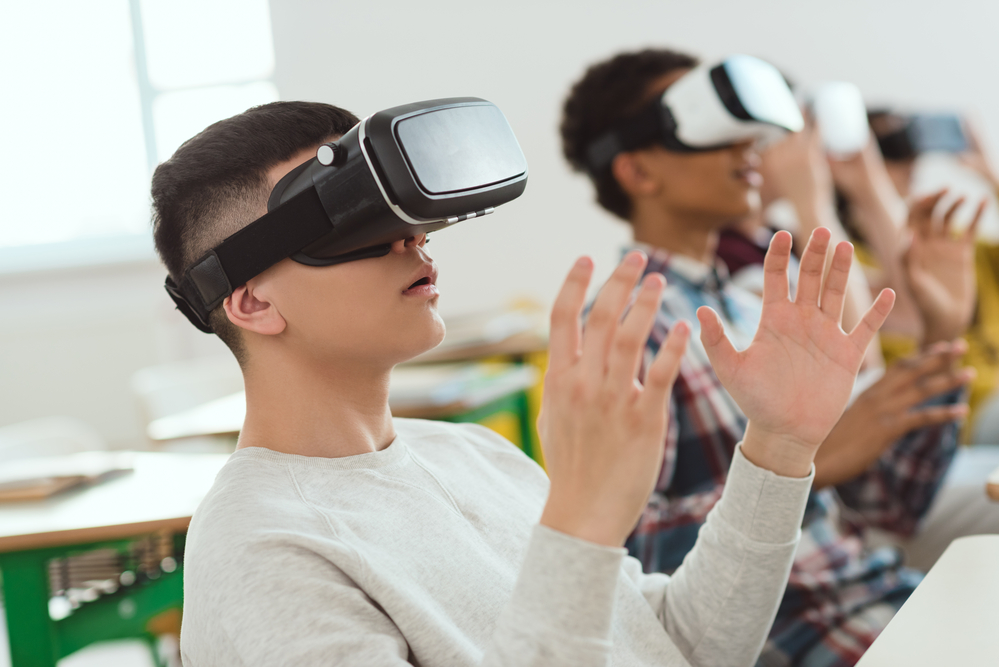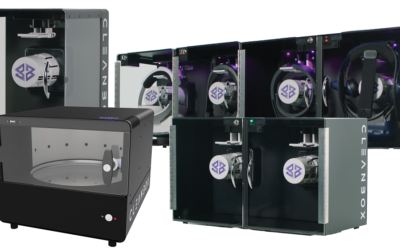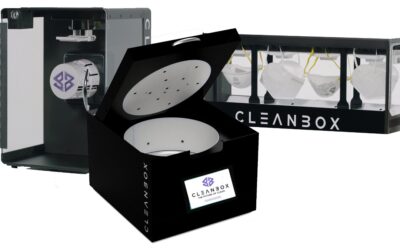ClassVR technology allows students to experience artificial reality (AR) and virtual reality (VR) under the guidance of their educator. Students may benefit from technology in the classroom, but institutions are pressured to ensure that these novel curriculum upgrades don’t increase the transmission of infectious diseases. Administrators and educators looking for a way to keep ClassVR headsets decontaminated should consider the UV disinfection boxes by Cleanbox.
Minimizing Contamination Risk on Class VR Devices in Your School
The importance of institution-wide decontamination protocol for classroom headsets is a topic that has gained a fair bit of attention since the COVID-19 pandemic. Traditional cleaning practices can’t mitigate contagious viruses effectively in classrooms utilizing shared systems. Since revolutionary technology is being used to supplement the curriculum, the disinfection method used to clean the headsets and devices should be just as current.
VR headsets can provide an immersive learning experience for students and have endless potential for application in all levels of education, so educators can expect this technology to be here for the long haul. Creating a high standard for cleanliness protocols will prevent headsets from spreading contagions and allow students to focus on learning without worrying about whether they are putting their health at risk using shared equipment.
Use Decontamination Technology
Hygiene technology has evolved to keep up with current equipment offerings, ensuring that every innovative educational device has a modern sanitization solution to accompany it. UV disinfection boxes are a contemporary way to minimize the risk of contagion through headsets and shared electronic use that is more financially feasible and verifiable than disposable wipes.
Forget Impractical Options
Educators often use disposable disinfectant wipes to clean headsets between users. Although wipes may seem an acceptable disinfection method at first glance, this assumption is false.
Disposable wipes are not a reliable solution, as using them provides the appearance of disinfecting an electronic device but falls short of total sanitization. Furthermore, students look to administrators and educators to watch out for their best interests, and using wipes as a primary disinfection solution for VR headsets is not how reputable institutions should maintain hygiene standards in the classroom.
Expense
Disposable wipes are an expensive option for institutions seeking a long-term solution for disinfecting VR equipment. The cost alone makes using wipes unsustainable from a financial standpoint, but wipes are a poor choice for other reasons as well.
Most VR equipment is not created to withstand repeated exposure to harsh chemicals and liquids. When using disposable wipes, the cleaning agent on the cloth can seep through the housing seams and damage the interior components of the headset. This chemical exposure shortens the lifespan of VR headsets, causing them to need to be replaced earlier than expected.
Long-Term Savings
Purchasing a Cleanbox unit is preferable to other short-term solutions as the device will pay for itself in savings. Additionally, UVC units will last for years, do not have ongoing expenses, and require minimal upkeep. UVC disinfection devices also prevent wear on VR headsets.
Since no chemicals are used during the cleaning cycle, plastic will not begin to deteriorate prematurely due to exposure. Headsets will also be protected from wear caused by friction, as CX Series UVC units are essentially no-touch and only makes contact with the headset to hold it in the proper position for cleaning.
Fluctuating Levels of Cleanliness
The use of wipes for high-stakes disinfection isn’t recommended. When students’ health is at risk, administrators should be sure that the sanitization method they approve is wholly effective.
Wipes create problems as they are challenging to use on all the components of VR headsets and are only as reliable as the person using them. It’s easy for an individual to become distracted during the cleaning and miss areas, allowing pathogens to contaminate the headset. This variability means that students cannot know whether the device they are using is decontaminated or not.
Hospital-Grade Every Time
Cleanbox’s UV disinfection boxes are the wise choice for institutions looking for an unquestionable clean. Independent-lab testing found these units are 99.999% effective at removing pathogens. Wipes cannot replicate this level of decontamination since each cleaning has too many potential variables to account for that could impact the result. UVC units also stop germs from spreading because of one individual’s carelessness or error.
The standard operating procedure for the CX series and OmniClean devices requires educators or students to load the object being decontaminated and press the start button. Then, after the 60-second sanitization session has finished, remove the item from the chamber. These units prevent human error from contributing to virus transmission. Each disinfection cycle offers a consistent clean due to proprietary UVC LED engineering technology.
Environmental Damage
Not only is it challenging to determine the effectiveness of wipes, but it’s also difficult to determine precisely how they will impact the environment after they have been discarded. Many environmental scientists anticipate future landfill issues because of how resistant wipes are to decomposition.
One thing is sure; there are no environmental benefits associated with using disposable wipes, especially on the scale needed to provide cleanings between every user. A typical college class can use hundreds of wipes to disinfect VR headsets over one semester. The waste accumulation is unnecessary and will negatively impact the planet’s future.
Chemical-Free and Eco-Friendly
Cleanbox’s LED UVC units do not release anything but ultraviolet C rays that meet the specific parameters necessary to destroy pathogens. However, not all UVC lights can say the same. For example, many UVC bulbs release ozone because they are not operating at a high enough wavelength, making them a poor choice for indoor environments. Ozone can cause respiratory irritation and distress, posing a potential danger to students and educators.
In addition, UVC units don’t contribute to overflowing landfills the way disposable cleaning products do. There is also no concern that chemicals from disinfectants will contaminate the area where they are discarded. UVC units are an environmentally conscious method of eradicating pathogens without exposing users to chemicals or potentially hazardous outputs such as ozone.
Choose Cleanbox
Institutions want students to feel comfortable coming to classes and using VR headsets to improve their experience. However, without a proven method of decontaminating shared equipment, students may hesitate to participate fully in AR and VR technology exercises. Choosing to add advanced hygiene technology to the classroom will show students that their health is being considered, allowing them to participate without worry.
The CX Series
Cleaning headsets can be completed without wasting materials or time. The CX series is built for sanitizing virtual and artificial reality headsets and any other type of headgear. In addition, educators can have the chamber modified to suit their needs since the inserts can be customized to accommodate any headset. The device can also be configured to clean multiple headsets in one 60-second cleaning cycle.
The OmniClean
For sanitizing items like cellphones, tablets, handheld devices, and other shared electronics, the OmniClean offers the same targeted UVC LED clean as the CX series. However, the OmniClean can sanitize any item that fits in the compartment where the quartz plate and over 30 UVC LEDs, the OmniClean leaves no area unsanitized, offering 360 degrees of UVC rays.





